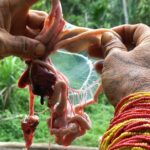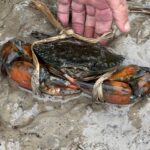In former articles on this website, we already discussed two edible caterpillar species from Kongo Central. One species was ‘Bisu’ Nudaurelia petiveri, which was described here. And the other species was ‘Kaba’ Lobobunaea phaedusa, described in this article there. Additionally, a good number of edible caterpillars in Kongo Central was already presented in Part 1 of this series, which can be seen here.
Paul Latham, and Augustin Konda ku Mbuta will now continue to briefly present all other important edible caterpillar species in Kongo Central.
—————————————–
Minsongo or Malemba, Gonimbrasia alopia

Gonimbrasia alopia feeding on Mango in January
This species is found from Guinea to Congo and into Kenya. The eggs are oval, 2.0 x 1.5 mm, and hatch in about 15 days. Caterpillars appear from November to January, usually in small numbers. In the final instar they may be distinguished from Pseudantheraea discrepans by having a single dorsal bifid spine on the 11th. segment. Food plants are Albizia ferruginea, Manotes expansa, Millettia barteri, Mango and Chaetocarpus africanus. Pupation takes place underground.
Minsuka, boso boso, Nudaurelia anthina
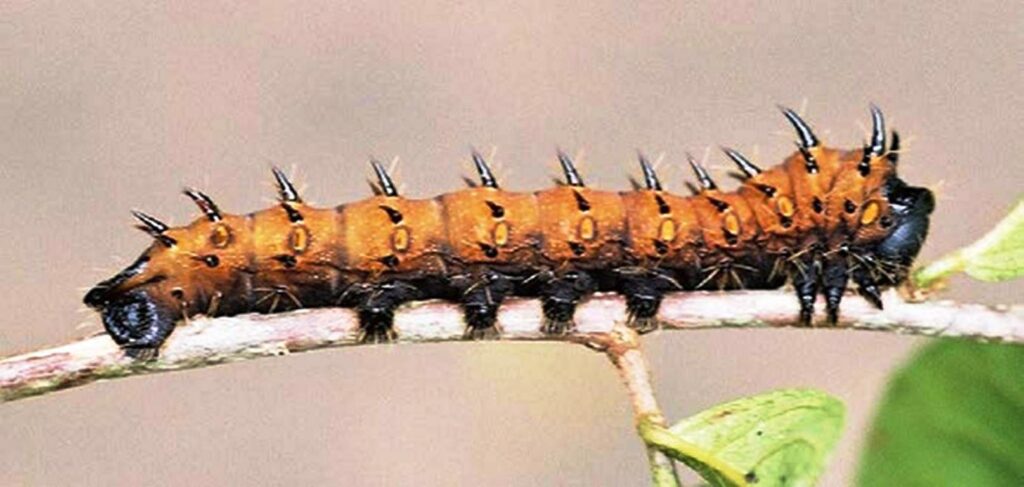
This species is found from Sierra Leone and Gabon and across into East Africa. The caterpillars are also called Minsuka lala (lala = sleep) because of their tendency to curl their heads downwards, as in the photo. The eggs of Nudaurelia anthina are round, cream coloured, and laid in a cluster. They hatch after 12 days. The caterpillars are found in small colonies during the rainy and short dry seasons (January and February). Like related species, pupation takes place just below the soil surface. The chrysalis remains underground for 4 – 10 months. The main food plant in Kongo Central is Aframomum alboviolaceum. Other food plants include Antidesma venosum, Strychnos pungens, and Manotes expansa.
It used to be the custom that if a child discovered these caterpillars he took them to the chief who would decide whether it was time to start collecting. Now, unfortunately, everyone collects without seeking the chief’s authority, and the species is becoming rare. Being a savanna species, fire is also a likely cause of its disappearance.
Mukoko, Bunaeopsis aurantiaca

On the Bateke plateau caterpillars were seen feeding on an unidentified species of grass. They are also eaten in eastern D.R. Congo. Photo taken by Louisa Ngoie near Lubumbashi
Munsona, Platysphinx stimatica

Not everyone appreciates this species either because it is considered an orphan’s food (Nsona = orphan) or because it is thought to make one susceptible to skin infections. It feeds on Millettia versicolor and Crossopteryx febrifuga in Kongo Central. Pupation takes place in an earthen chrysalis underground.
Munsona sona, Acherontia atropos
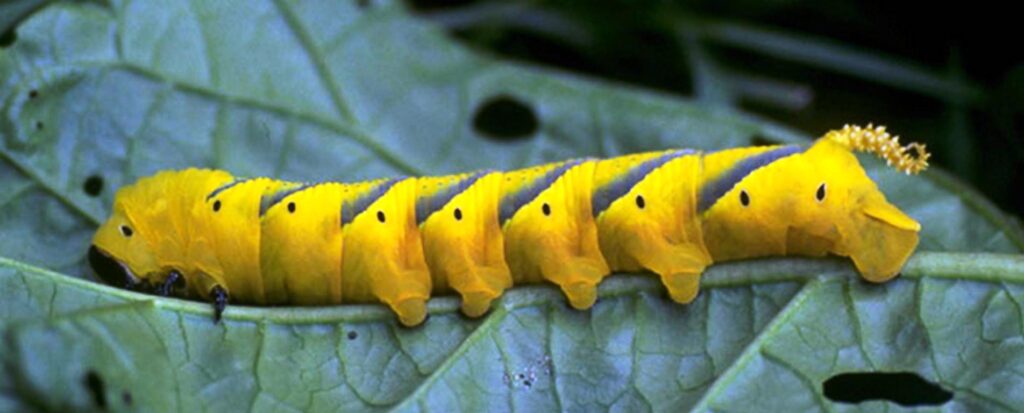
Again, not everyone will eat this species. In Kongo Central it feeds on Solanum macrocarpon which is a commonly planted vegetable. The moths are sometimes found in beehives, feeding on the honey, particularly when colonies are weak.
Though these last two species are the only hawkmoths (Sphingidae) included here, Agrius convolvulus (the Convolvulus hawkmoth), which feeds on sweet potato vines, is common and widely eaten in southern Africa.
Mvinsu, Imbrasia epimethea
This forest species is highly sought after in Kongo Central. Eggs are laid in large clusters on the undersides of leaves. Young caterpillars hatch out in November and December. Large numbers of caterpillars feed and move together. The caterpillars normally descend the trunk of the tree during the day and then ascend to feed at night. However, larvae are sometimes found feeding during the day. They may feed for between 45 and 61 days.

Imbrasia epimethea feeding on Petersianthus macrocarpus.
Foodplants are Holarrhena floribunda, Petersianthus macrocarpus, Ricinodendron heudelotii, Funtumia africana and Acacia auriculiformis. Ricinodendron heudeloti was traditionally planted in villages to attract this species.
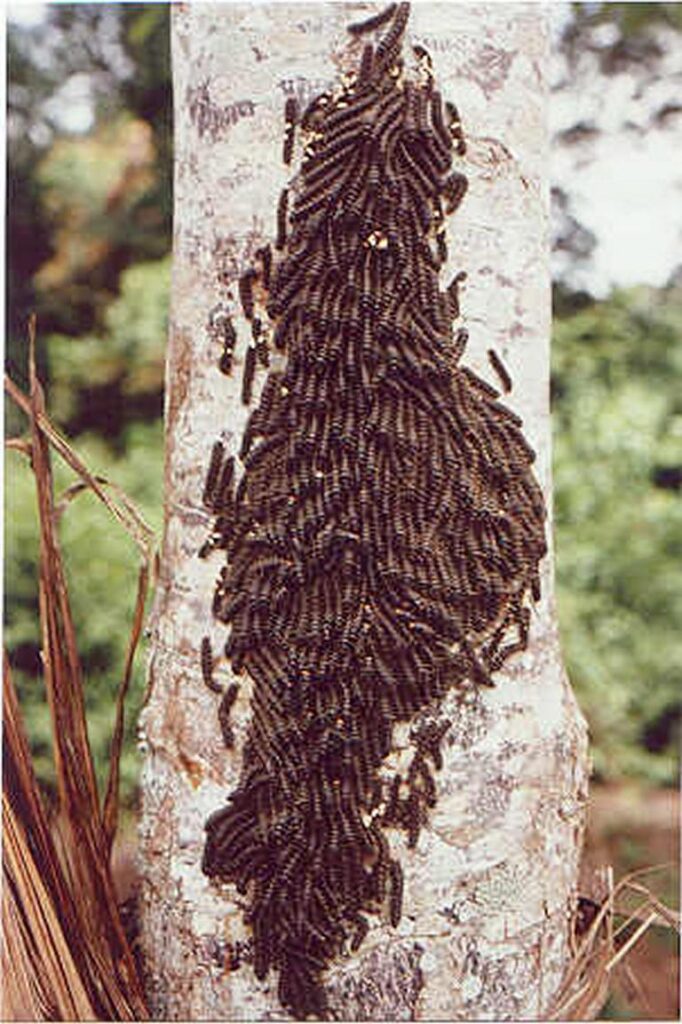
Imbrasia epimethea photographed on the trunk of Holarrhena floribunda. Photo: F. Santereau
If the caterpillars are found they belong to the family that planted the tree. If a colony is found in the forest it is marked with grass, or the bark of the tree is cut, to signify that the colony is claimed.
Before pupation, which occurs in the soil, the larvae lose most of their hair. There may be 2 or 3 generations per year. Gut contents are sometimes removed before cooking. This species is particularly rich in protein.
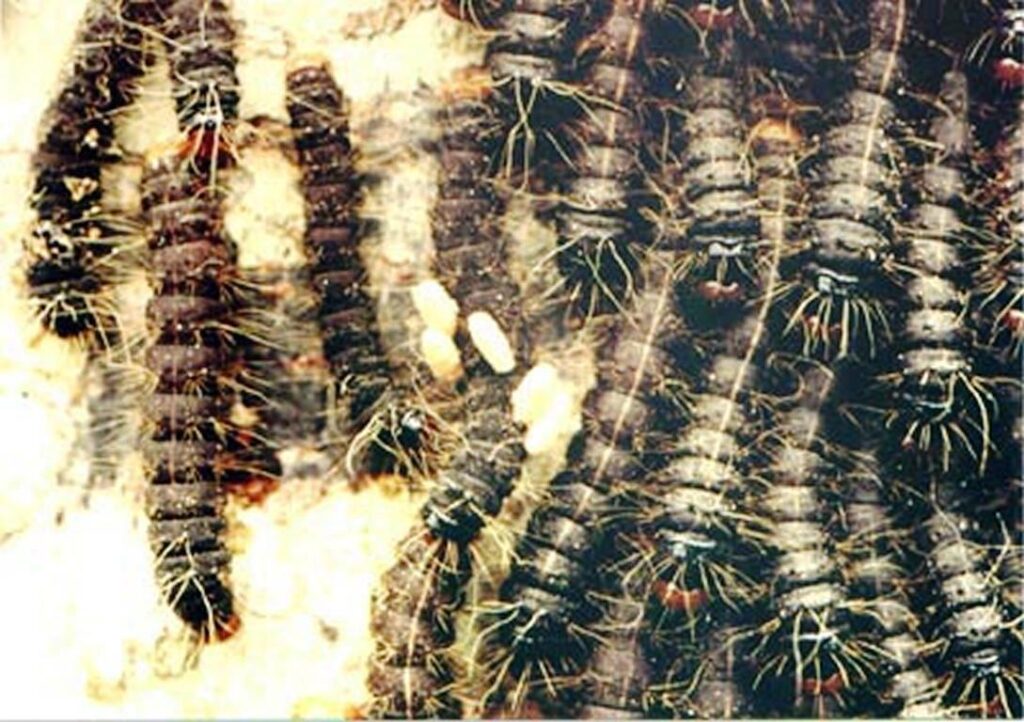
The parasites attached to some larvae in the photo are probably the cocoons of Glyptapanteles maculitarsus.
Ngala, Cirina forda
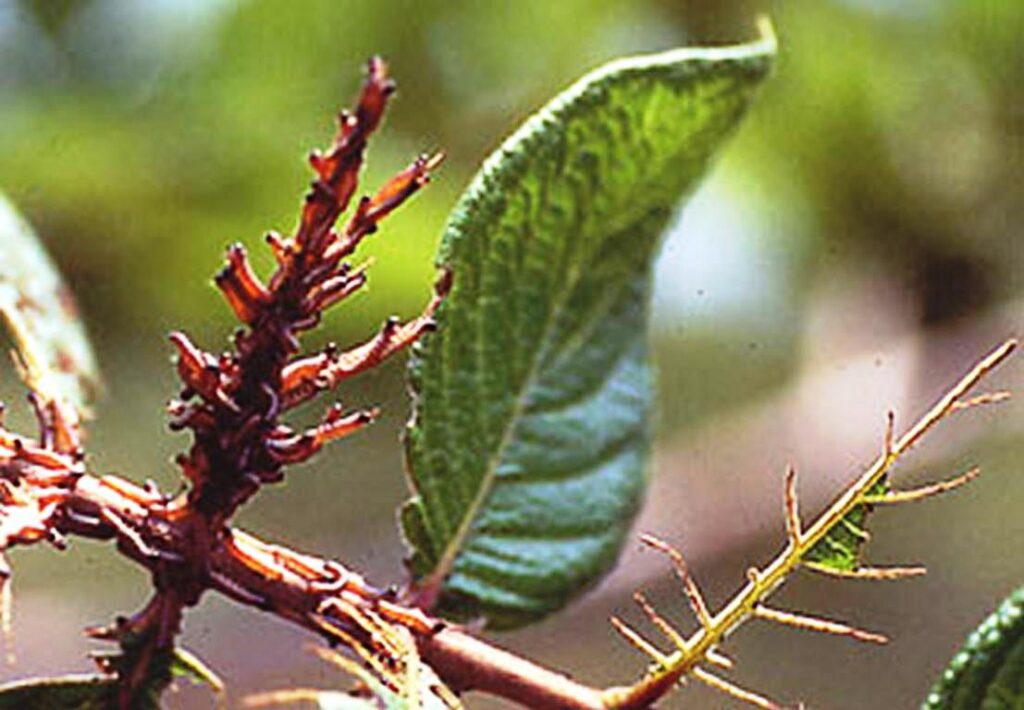
This savanna species is also very much appreciated and is found early in the rain season from November to January in Kongo Central. Probably as a result of over-collection and bushfires, it is much less common than previously. It is widely distributed and eaten by people elsewhere in sub-Saharan Africa. The eggs are small and white and are laid in a single large cluster around the tip of a twig of the food plant Crossopteryx febrifuga. The caterpillars are often found in large numbers on each tree and can be located because they leave the branches bare. The gut contents are normally removed before cooking. Pupation takes place at between 5 and 7 cm depth.
It is not difficult to reintroduce and rear this species in areas where the food plant is plentiful. One farmer obtained young larvae from the market in November/December, introduced them to Crossopteryx febrifuga trees on his land, and reared them to maturity allowing them to pupate, which they did below the trees.
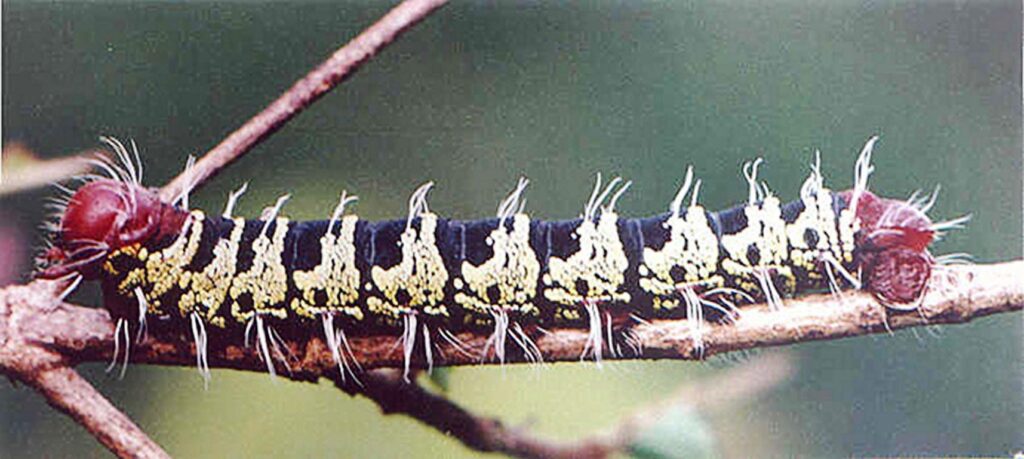
Cirina forda on Crossopteryx febrifuga
He protected the area from fire during the dry season and the following year the numbers had increased sufficiently for him to start collecting them for consumption. In subsequent years he has been able to collect and dry reasonable quantities for his family from an area of savanna (approximately 10 kg fresh caterpillars per ha). He has found that providing the land is protected from fire the species remains in the same location from year to year.
Unfortunately, this species has since disappeared from Kongo Central due to over-collection. Attempts to reintroduce it from Bandundu have so far been unsuccessful.
Nkaka nsani, kikuya, Acraea Pharsalus

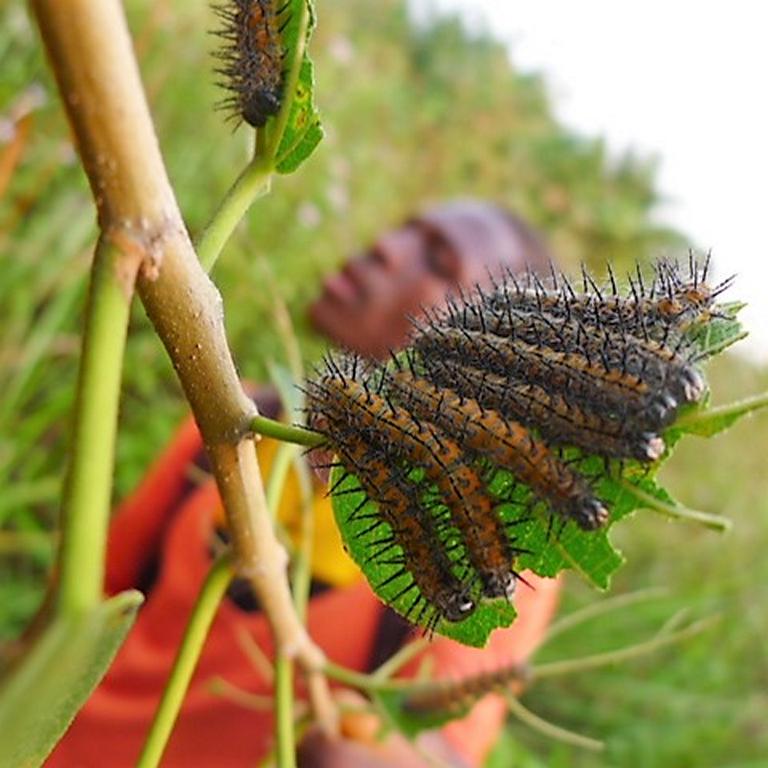
The caterpillar was feeding on a Ficus sp. (Kikuya) probably F. exasperata or F. asperifolia in August. Both photos: Augustin Konda ku Mbuta
Nkankiti, Anaphe panda
A processionary caterpillar. Nkankiti feed together on Bridelia spp. or Chaetocarpus africanus. The young larvae collect together on the leaves while the older larvae collect on the bark of the tree. When pupating the caterpillars form a silken nest close to the stem of a bush or tree. The caterpillars are removed once they are of sufficient size and are much appreciated, being rich in fat. They are usually cooked with a few hot peppers and a little salt. Gut contents are not removed. Previously the nests were used to keep gunpowder dry while hunting.
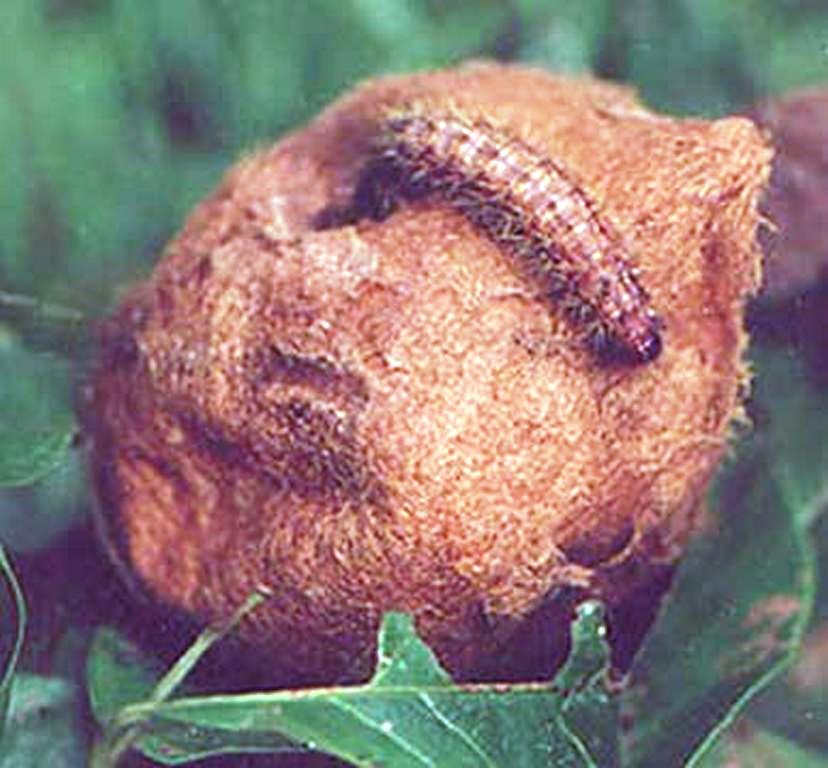

Nest formed by larvae about to pupate in January.
Nkulu, Fam: Lasiocampidae ?
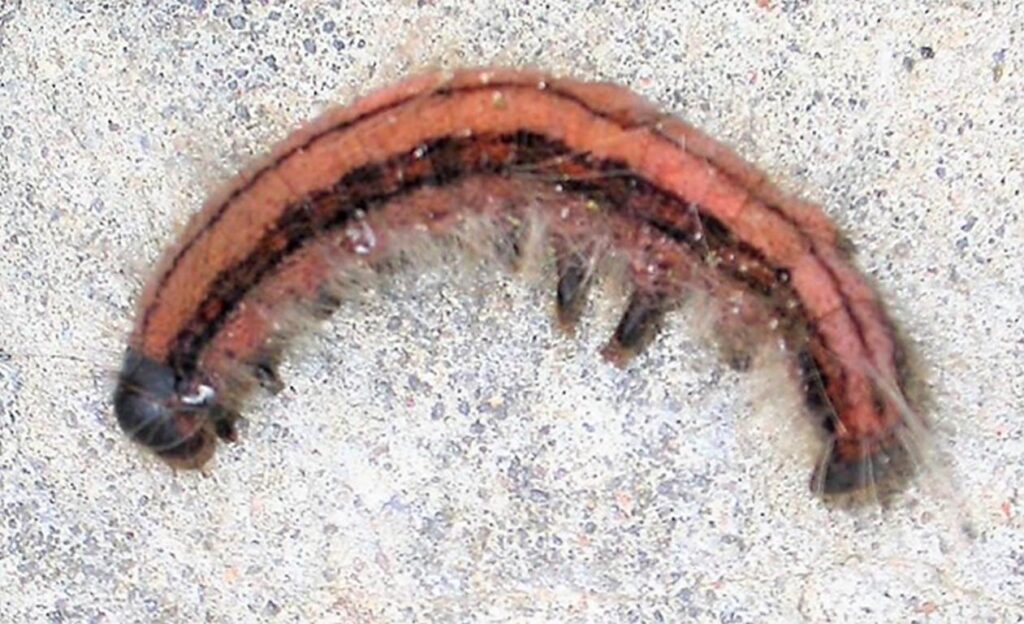
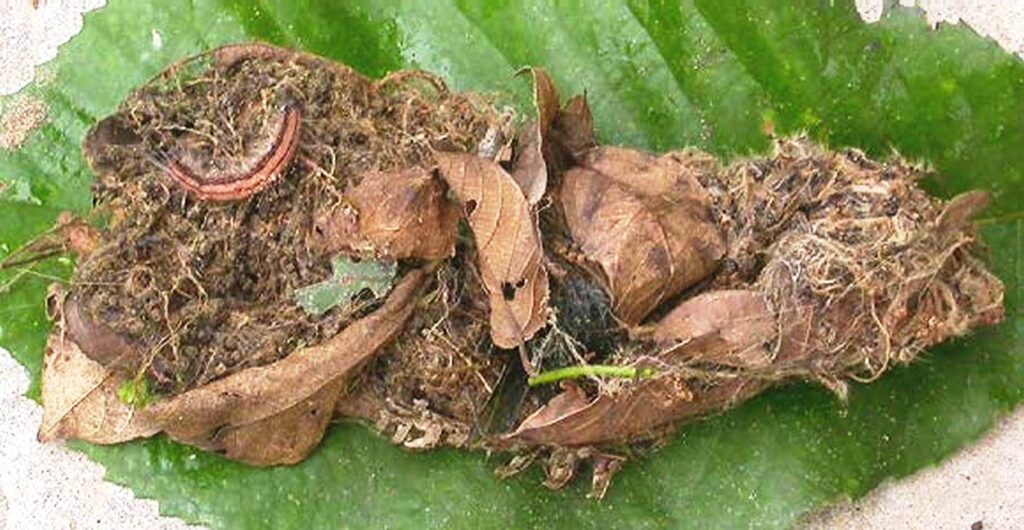
This species forms a long, loose sack, similar in width to Nkankiti, but up to 30 cm long. The caterpillars have to be prepared with care as they can be poisonous. The head and gut must be removed. They are found in February, often feeding on Lannea antiscorbutica or Syzygium guineense var. macrocarpum but are not particularly common.
Nsanga, mfundi, mimbota mbota, Epidonta brunneomixta
An important edible caterpillar was found in December and January. It is particularly rich in protein and can be eaten without removing the gut contents. It feeds on Hymenocardia ulmoides, Millettia versicolor and Leptoderris congolensis.
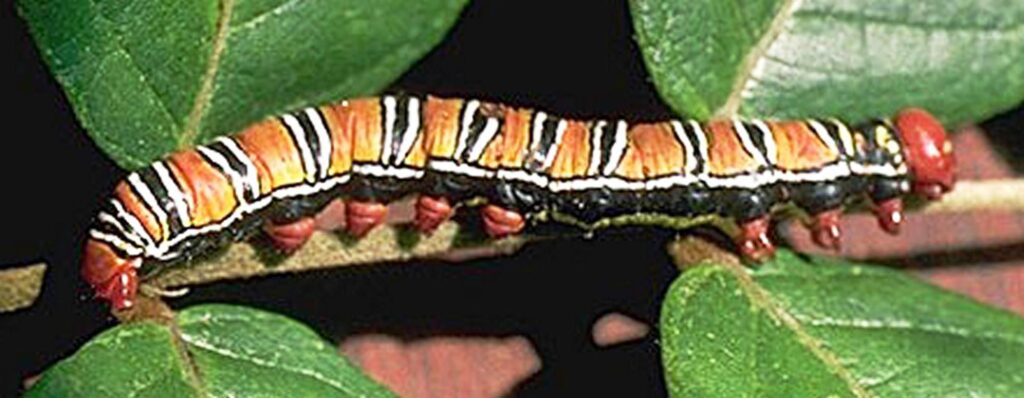
Nsanga feeding on Hymenocardia ulmoides
Nsani, Cymothoe caenis
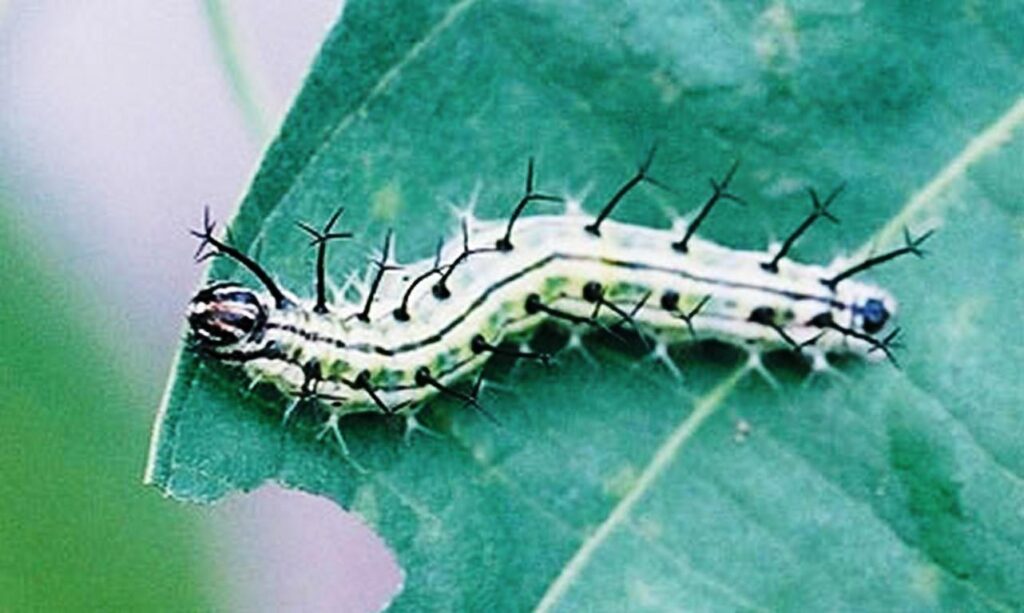
Nsani is a very common species of butterfly which feeds on Oncoba welwitschii. At least two generations appear during the rainy season and caterpillars can be collected in large quantities during January and again in May/June. Some people do not eat it because of its bitterness.
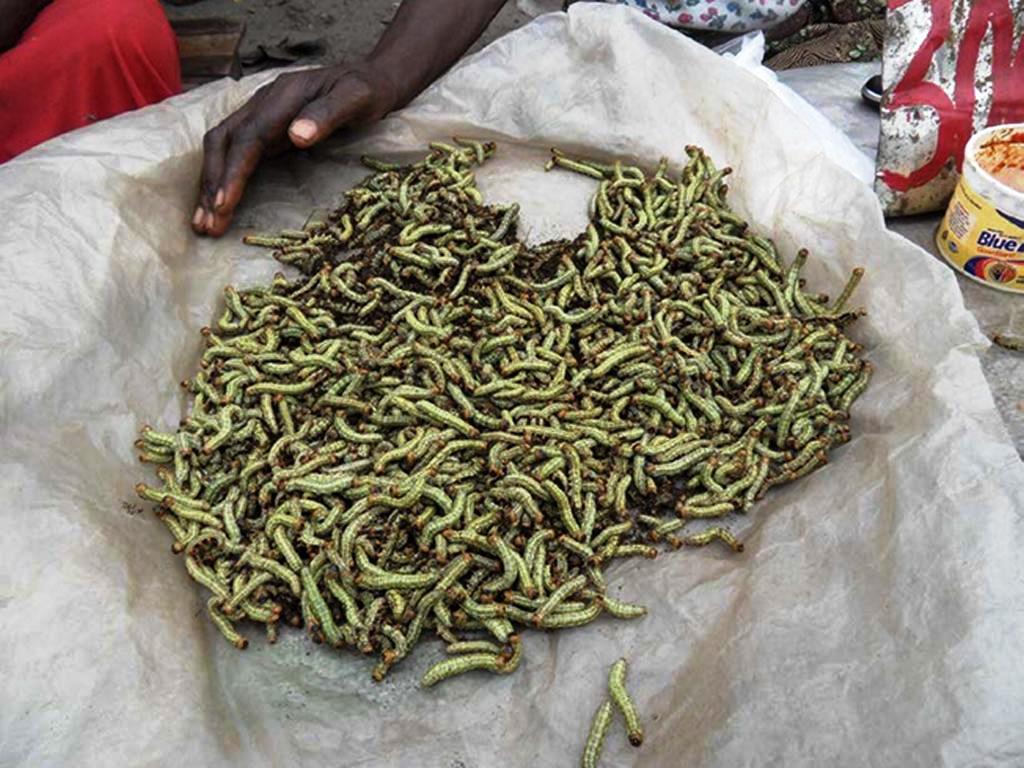

Dried Nsani caterpillars before being soaked in water and cooked
Nsindi, Haplozana nigrolineata
This species appears in November and is collected in large quantities on the Bateke plateau. It feeds on Masinda, Hyparrhenia diplandra, and other tall, tuft-forming grasses.
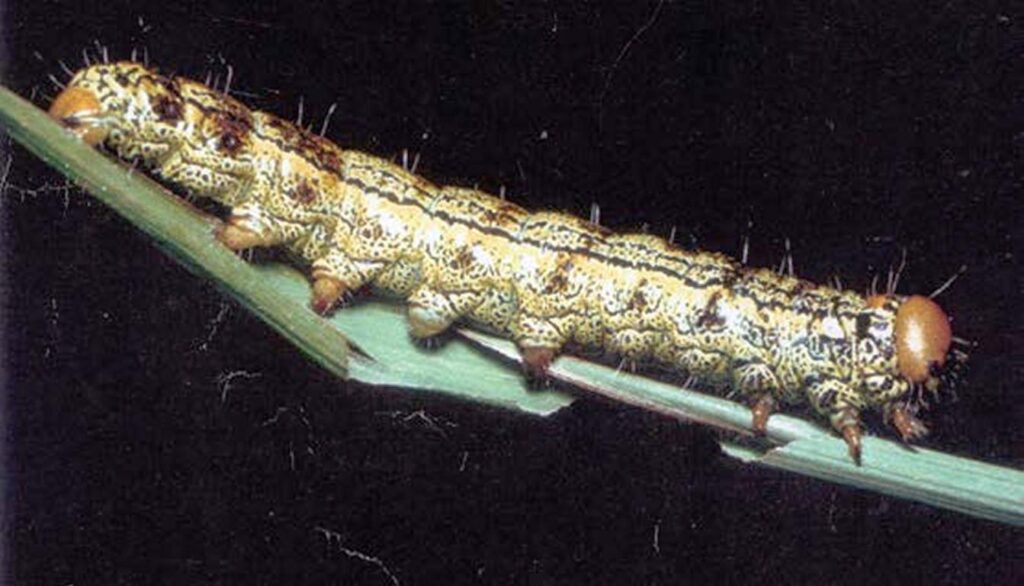
Photo: François Malaisse
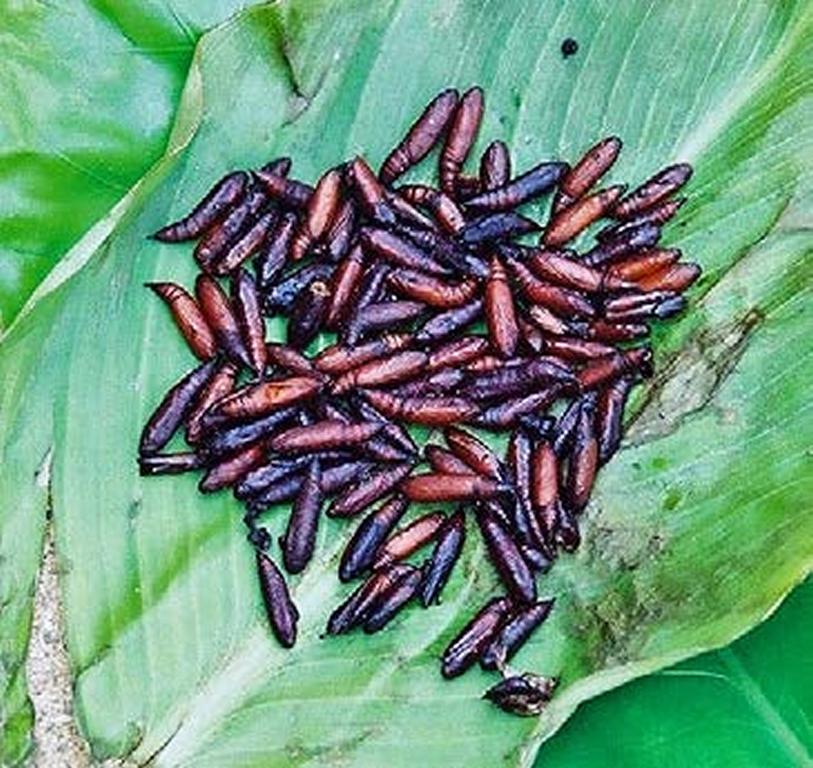
Pupae collected from Bateke plateau in December.
Nsongi, Rhypopteryx poecilanthes
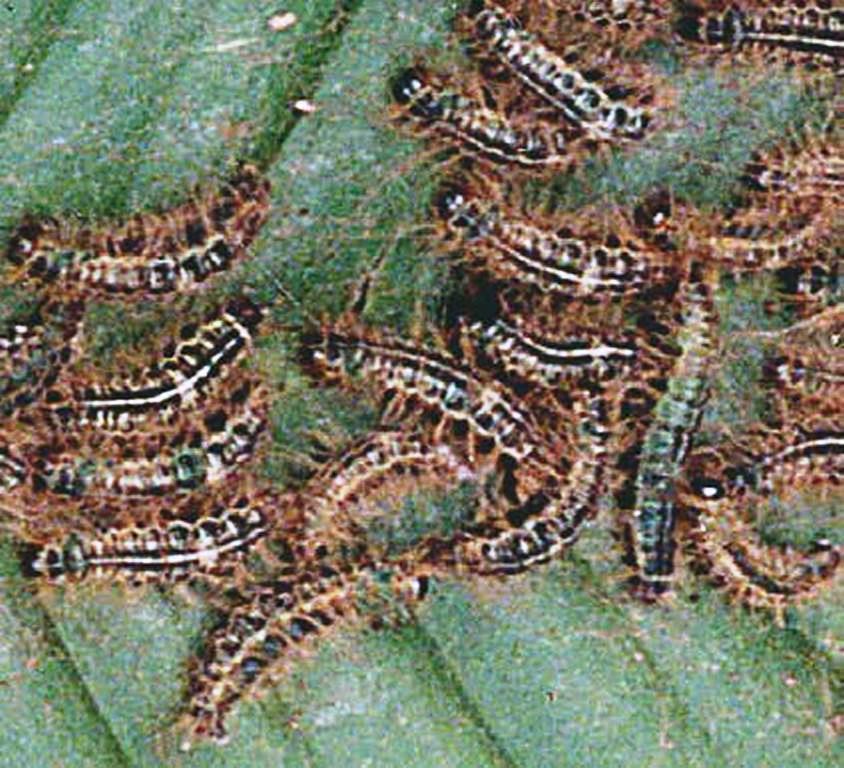
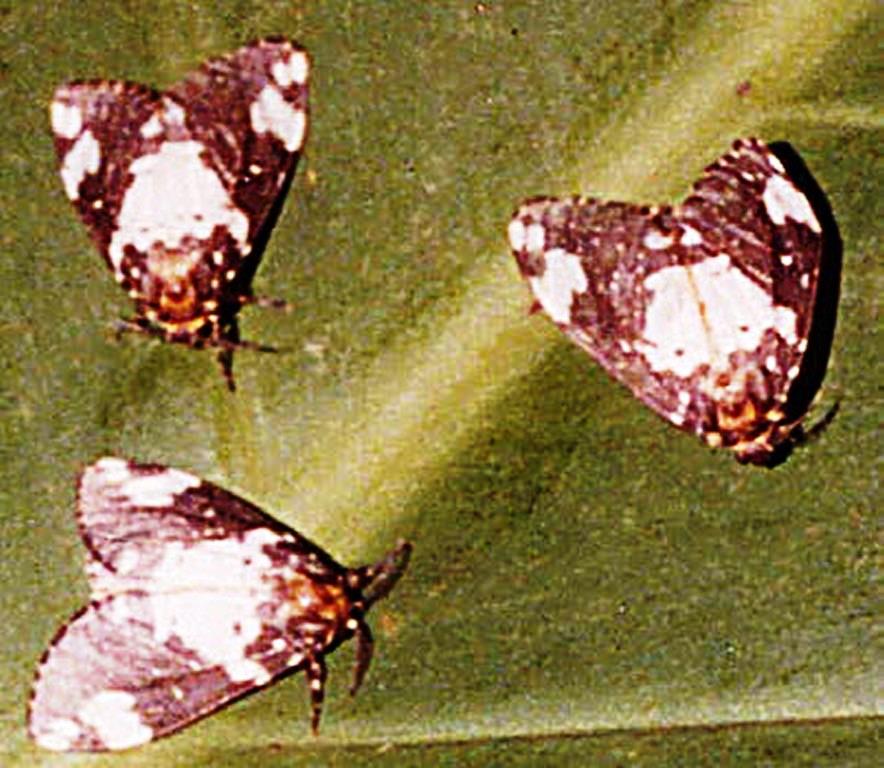
Rhypopteryx poecilanthes caterpillars and moths
The caterpillars feed on Symphonia globulifera, appearing in July. Pupation lasts about 15 days.
N’teku, Nyodes vitanvali
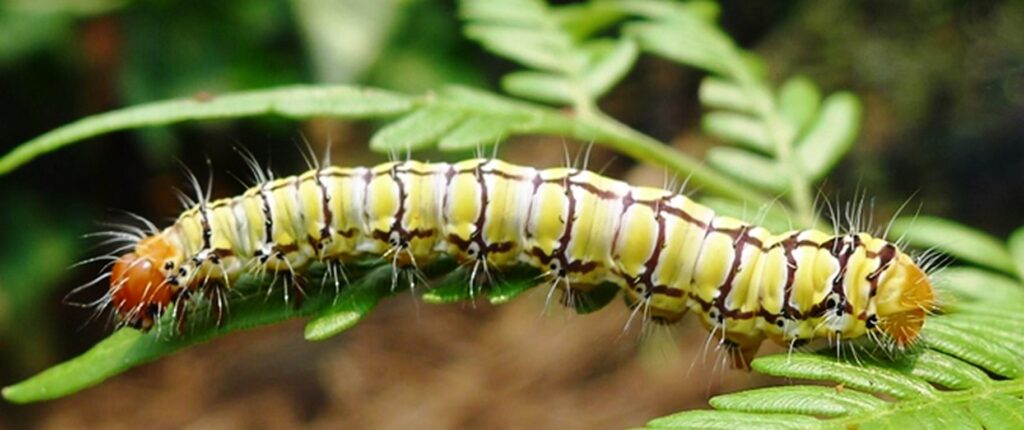
The caterpillars appear in August and feed on Pteridium centraliafricanum. Photo: Augustin Konda ku Mbuta
Nziozu, Lasiocampidae sp.
Nziozu is collected in January and February but is not eaten by everyone. It is found in small colonies on Leptoderris congolensis. This plant is used as a fish poison and is known to contain rotenone.
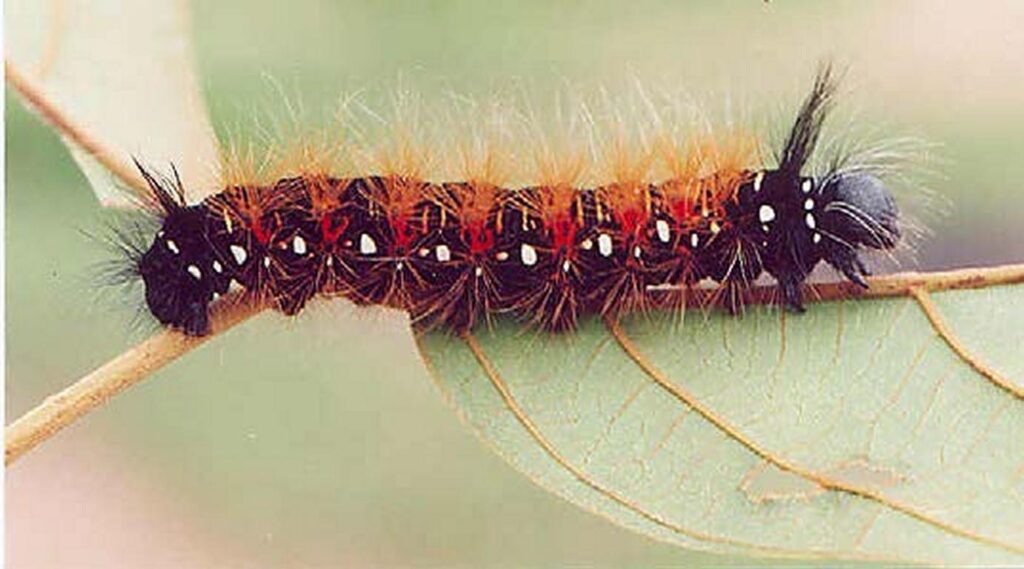
Nziozu on Leptoderris congolensis in January

Children collecting caterpillars near Mbanza Nzundu
Some pests of caterpillars
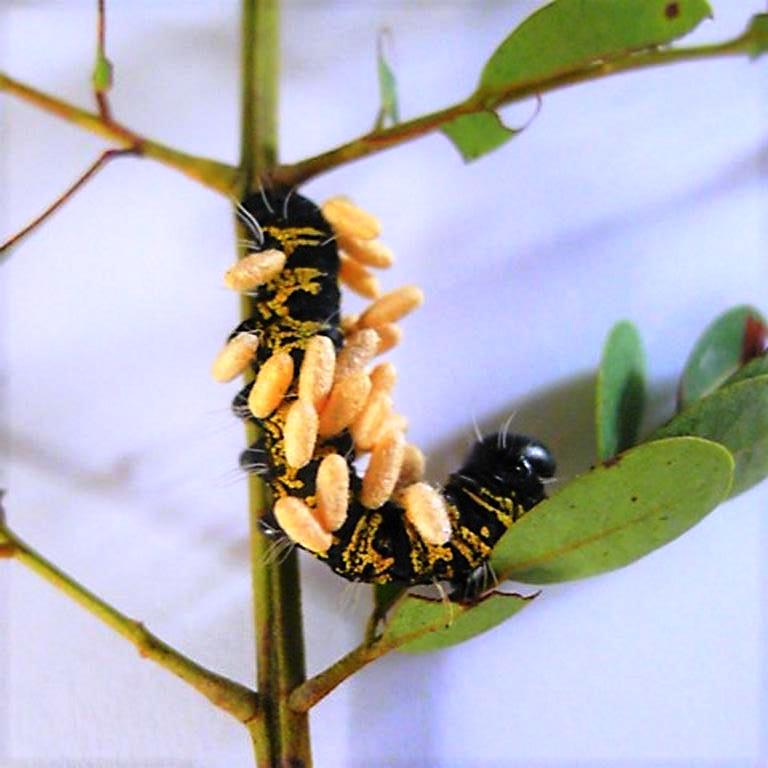
Caterpillars have many enemies. Here a Cirina forda larva has been attacked by Glyptapantales wasp that lays its eggs inside the body of the caterpillar. These turn into grubs and later cocoons attached to the skin. Photo: Augustin Konda ku Mbuta
Several species of ant, often living in large colonies in trees, attack both caterpillar eggs and larvae:
- Mankambala (Oecophylla longinoda),
- Bimama (Crematogaster jullienei),
- Nsongeni (Dorylus sp. known as safari ants),
- Mfwila, and
- Nsimba zi nsiasi.

Here a colony is being destroyed by fire. Photo: Augustin Konda ku Mbuta
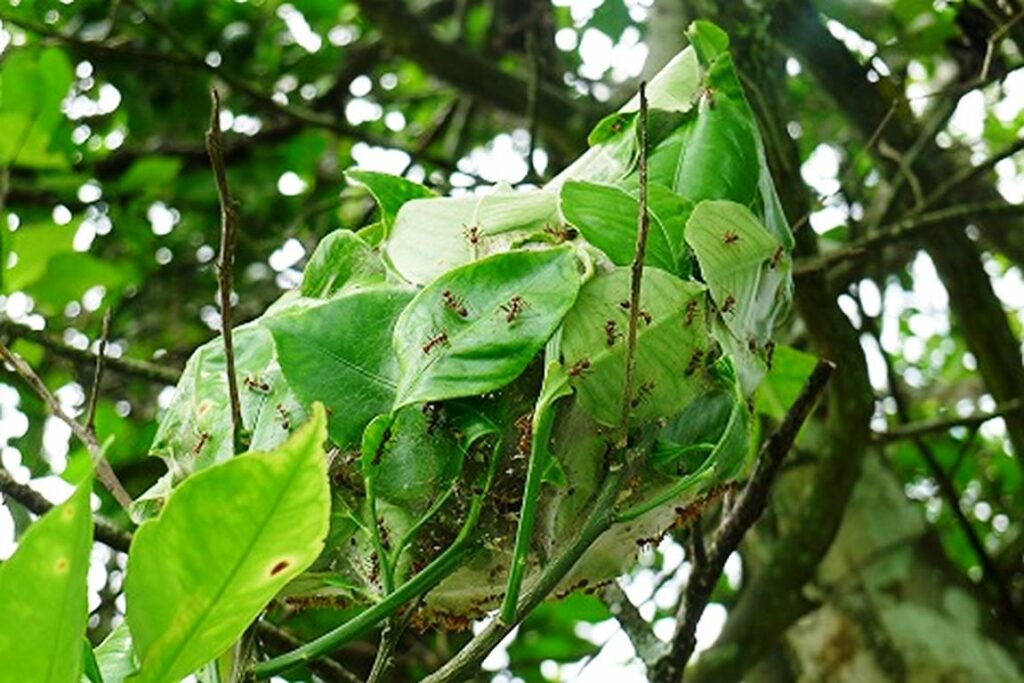
A nest of Mankambala (Oecophylla longinoda) ants in a Citrus tree. Photo: Augustin Konda ku Mbuta
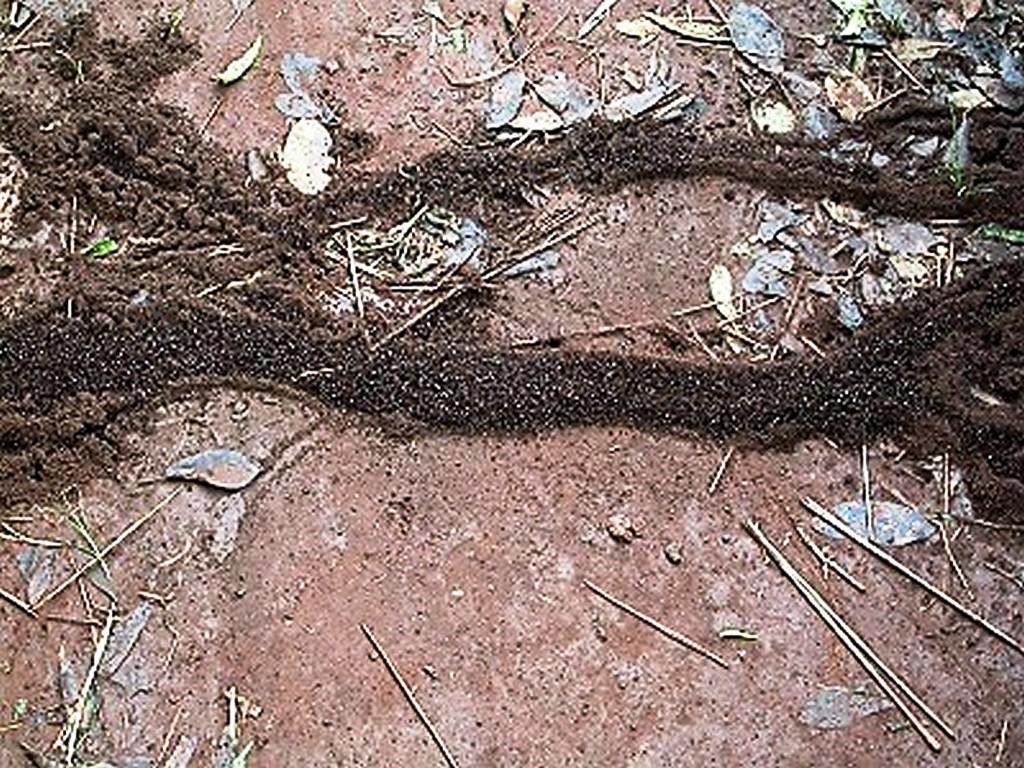
Nsongeni ants. These safari or driver ants (Dorylus sp.) can destroy a colony of caterpillars in minutes.
———————————————————————————————————–

